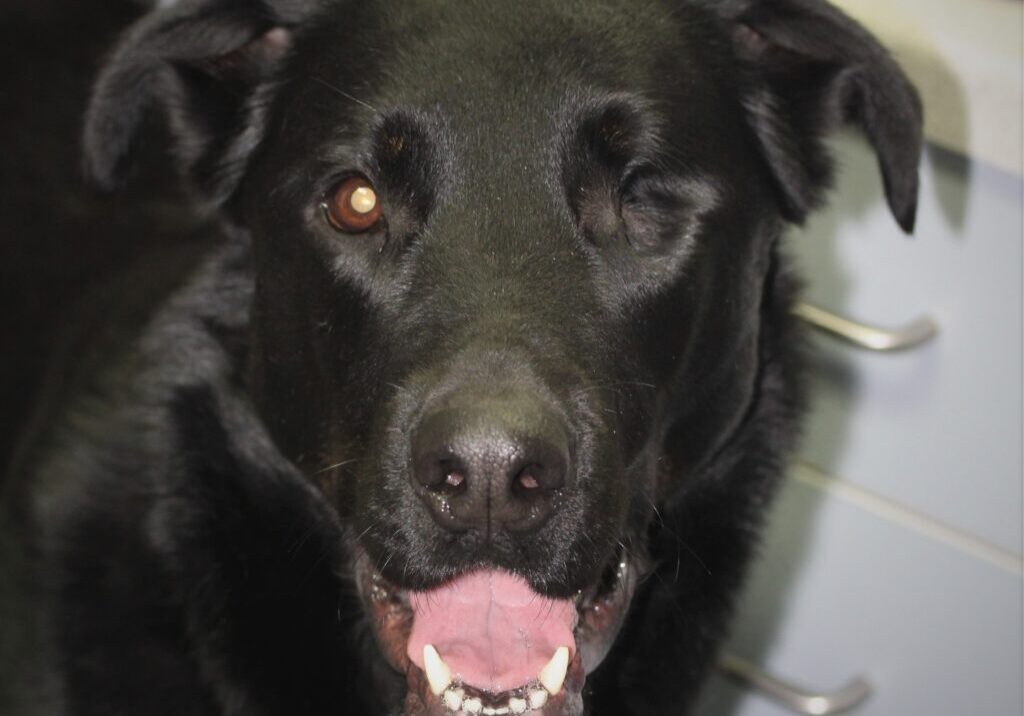Why Should I Bring my Pet to Willows for an Enucleation Procedure?
Willows is one of Europe’s leading small animal referral centres. Our state-of-the-art hospital is led by internationally renowned Specialists, committed to providing the highest standards of veterinary care. Our Ophthalmologists are supported by our multi-disciplinary team of Specialists across a number of disciplines including; Anaesthesia, Diagnostic Imaging and Emergency and Critical Care.
Willows also has a large dedicated team of Nurses and clinical support staff available 24 hours a day, every day of the year to provide the best possible care for your pet.
What is an Enucleation Procedure?
Enucleation is the operation performed to remove an eye and is most commonly advised to relieve uncontrollable pain associated with an eye problem.
The most common reasons for enucleation include glaucoma (increased pressure inside the eye), neoplasia (cancer inside or around the eye), severe trauma that cannot be repaired surgically, and severe infection/inflammation that cannot be managed with medication. In the case of a blind but comfortable eye, enucleation is usually not necessary. However, a blind and painful eye will distress your pet, and in the case of glaucoma the pain is often comparable to having a chronic migraine. Enucleation will alleviate this pain and is preferable to the long-term use of medication.

What Does an Enucleation Involve?
The operation involves a general anaesthetic for the patient. The hair around the eye is clipped; the eye is completely removed and the eyelid skin is then stitched closed over the eye socket (the bony space within the skull that protects the eye). Stitches placed within the outer layers of the eyelid skin may require removal. The majority of pets will go home on the day after surgery, in order to administer appropriate analgesia (pain-relief) during the first hours after the procedure.
Fig 1: Labrador ‘Rachel’ a year after enucleation of the left eye

What can I Expect for my Pet Following an Enucleation Procedure?
Most animals are ‘back to their normal selves’ within a few days. Anti-inflammatory/pain killer tablets will be prescribe to take orally for several days after the surgery. All patients will need to wear a plastic collar for several days to prevent damage to the surgical site. Occasionally, there may be a small trickle of pink fluid from the wound or from the nostril on the same side as the surgery; this is not a cause for concern and should resolve within two to three days. A follow up appointment is recommended 10-14 days after surgery to make sure that the wound is healing well. If there are stitches which need removing, this is normally done on the same day.
In most cases the eye is removed to control pain associated with an eye problem. Most animals are therefore more comfortable following surgery and appear much happier within 24 hours. Patients will receive painkillers before the surgery and this medication will be continued once the pet goes home. There is no pain associated with the surgical site in the long-term.
Initially the skin around the operation site may be slightly swollen and bruised but this should resolve over a few days. The hair will grow back over several weeks. The skin over the surgical site will slowly start to sink in slightly as there is nothing in the eye socket to replace where the eye was. This ‘sinking in’ effect is less obvious in animals with long hair or dark coats than those with short hair and light coloured coats.
What Happens to the Eye after is Removed?
The eye may be sent to a pathologist for histology. This is similar to sending a lump for a biopsy and may be recommended in some cases to confirm the cause of the problem inside the eye. Pathology is important in almost all enucleated eyes to find out if there are any implications for your pet’s normal eye, as well as his or her general health. The Specialist and pet owner will be informed of the pathology results, usually within three weeks of the operation.
To save this page as a PDF, click the button and make sure “Save as PDF” is selected.
Ophthalmology
Find out more
To assist owners in understanding more about Ophthalmology we have put together a range of information sheets to talk you through the some of the more common conditions seen and treated by our Specialists.

